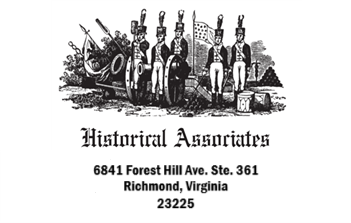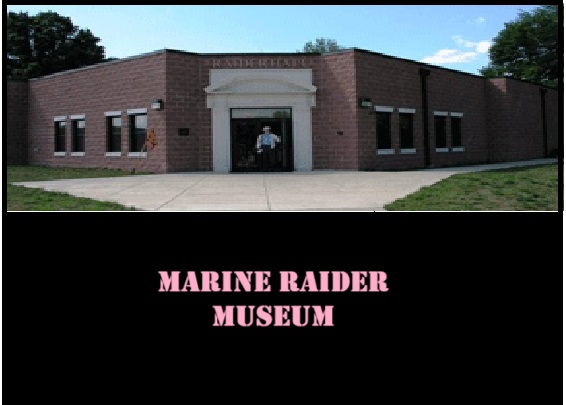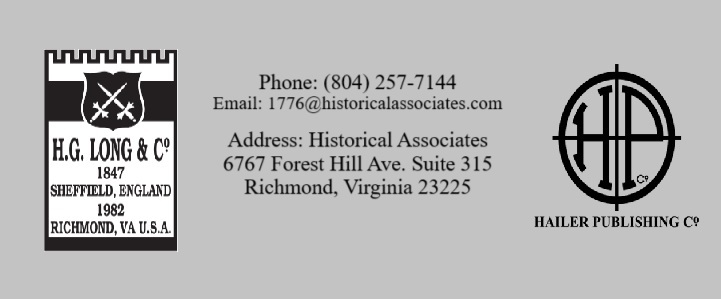
Menu
U.S. Marine Raider Museum Update – June, 2019
by Robert A. Buerlein
Honorary Raider
by Robert A. Buerlein
Honorary Raider
In 2014, Karen Carlson Loving became president of the U.S. Marine Raider Association (USMRA) and revved up the Museum and Historical Committee. This consisted of Karen, at the helm; LtCol Joe Shusko (USMC, Ret), as Curator of the Raider Museum; Lynn Dix; Seth Dix; Doug Bailey and myself, Bob Buerlein. (All of us are Honorary Raiders).
We would meet once or twice a year, at the U.S. Marine Raider Museum, at MCB Quantico. Joe Shusko had organized a great meeting room, with some Raider artifacts and books available, as a suitable reference area. Outside this room, adjoining rooms and hallways, were festooned with all types of Raider gear, weapons, uniforms, photos and 782 gear, as well as enemy artifacts brought home by Raiders (after the enemy “no longer had any use for them”).
Early on in 2016, we devoted our time to reviewing each artifact, noting exactly what it was (including, in most cases, the name of the maker) and deciding where it would be best
displayed or stored. As we progressed, the relationship between the Marine Raider Museum (MRM) and the National Museum of the Marine Corps (NMMC) warmed up. This was due, in part, to their growing interest in learning more about this “Commando-type” outfit and their special gear. In 2017, parts of our meetings included the attendance of the Director of the NMMC, Lynn Ezel, along with two key members of her curatorial staff. In early 2017, with the MMC curatorial staff, we reviewed the list of Raiders artifacts, and printed them out in the Museum. The NMMC staff made copious notes, all the while. After this, the NMMC staff went
back to their offices and reviewed our lists and discussed each object in our collection.
After about two months of review, they came back to us with a list of about 100 objects they would like to display in the NMMC, or have access to display at some future time, possibly to play an important part in a special exhibit. After both groups reviewed this list, our two groups met again at Raider Hall. Then we decided which artifacts would initially be transferred to the NMMC and what would stay at Raider Hall. We didn’t want to hold back historically important artifacts from the NMMC, but we also didn’t want the Raider Museum to be gutted. So, a good compromise was reached.
After that meeting, the Committee reviewed the final list of material going to the NMMC, and, at their request, we placed specific dollar values on each piece, so the NMMC could have values for insurance purposes.
Then this list was approved by the Board of the USMRA.
Also in 2017, discussions took place about the NMMC improving the quality of our exhibit display cases, to better protect the Raider artifacts from damage by heat, moisture, light and other environmental considerations.
Also that year, the NMMC featured a special exhibit on the Raiders’ famous Makin Island Raid, with artifacts actually used on the Raid. As the Raider Museum had an original tactical map used on the Raid, I inquired as to why it wasn’t used in the exhibit. We looked in displays throughout Raider Hall and didn’t see it. Then, I saw the two-foot x two-foot plexiglass ‘sandwich’, I had made with two pieces of 3/8”-thick plexiglas . Displayed in there was a black
and white, unimpressive machine copy of a map. It suddenly dawned on me that, when we received the original map and placed it in the Raider Museum, then in my building in Richmond, Virginia, I had taken the original Makin Island Raid map and had that machine copy made of it.
Then I placed the original map behind the copy and screwed together the two thick enclosing
pieces of plexiglass! I did this to protect the original map from damage from light – and to conceal the quite valuable original map, just in case a visitor in the museum got a case of sticky fingers!
As I reflect on the three-and-a-half decades of the Raider Museum, I see many people caring deeply about preserving the history of the U.S. Marine Raiders and working hard at this, hands-on, in the Museum. As Raider Rudy Rosenquist (Co-founder with me of the Museum) frequently observed: “The Raiders’ history could have easily been forgotten, as we were few in number (only some-8,000) compared to the rolls of the six big Marine Divisions in World War II”. But a bright Raider beacon continues to shine on, despite the passing of so many good and wonderful men who worked on the Museum.
And now, with the leadership of the current President of the Marine Raider Association, Col Craig Kozeniesky (who recently retired as a MARSOC Marine Raider), it continues to be our mission to see to it that this Raider Museum spotlight continues to shine on!
Lest We Forget!
Gung Ho!
Robert A. Buerlein
Honorary Raider
Co-Founder, U.S. Marine Raider Museum

Menu
